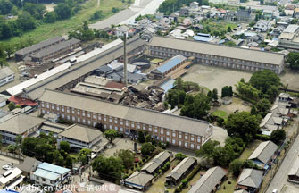Karst landform added to World Heritage List
Updated: 2014-06-24 09:59
By Li Jun (chinadaily.com.cn)
More sections of Shibing's karst landform, in Shibing county, Guizhou province, were officially added to UNESCO World Heritage List on June 23 at the ongoing 38th World Heritage Convention held in Doha, Qatar.
Shibing's karst landform becomes the third world natural heritage site in Guizhou. The province's two other world natural heritage sites were listed in 2007, in Libo, and in 2010, in Chishui.
Shibing's karst obtained the nomination for the second batch of the South China Karst World Natural Heritage in 2012 along with the karst area in Guilin and Huangjiang of the Guangxi Zhuang autonomous region, and the Jinfo Mountain karst in Chongqing.
The karst landform in Shibing county covers 282.95 square km, including Yuntai Mountain, with a nominated area of 102.8 sq km and a buffer area of 180.15 sq km.
Karst is one of the great landscape styles of the world, comprising distinctive terrain and associated ecosystems developed mainly on carbonate rocks. It is characterized by sinking streams, caves, underground rivers, gorges, enclosed depressions, conical and towerlike hills.
Shibing's karst landform has always been regarded as an excellent type of the world's tropical and subtropical dolomite karst. On the basis of ancient dolomite 570 million years ago, it develops into a typical gorge karst.
 |
|
Photo taken on Aug 24, 2011 shows the scenery of the Jinfo (Golden Buddha) Mountain, Southwest China's Chongqing. The World Heritage Committee on Monday inscribed an extension of South China Karst, a natural World Heritage Site since 2007, into the UNESCO's World Heritage List. [Photo/Xinhua] |


